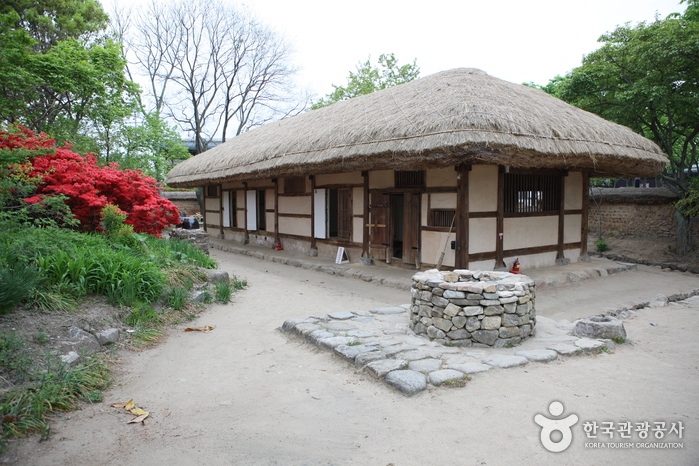Welcome to Sin Jae-hyo’s House: A Historic Pansori Destination
Welcome to Sin Jae-hyo’s House in Gochang, South Korea. This historic house, built in 1850, holds great significance in the world of pansori, the traditional Korean art form of epic chant. Sin Jae-hyo, a legendary theorist, director, and sponsor of pansori, dedicated his life to preserving and promoting this unique cultural heritage. As you explore Sin Jae-hyo’s House, you will have the opportunity to step back in time and witness the legacy of a man who played a crucial role in the growth of pansori.
Discover the Sarangchae: A Window into the Past
One of the main attractions at Sin Jae-hyo’s House is the sarangchae, the main room where important guests were traditionally received. As you step into this beautifully preserved space, you will be transported to the 19th century, experiencing the elegance and grandeur that once graced the house. Adorned with intricate woodwork and traditional furniture, the sarangchae offers a glimpse into the lifestyle of the elite during Sin Jae-hyo’s time. Take your time to soak in the atmosphere and imagine the conversations and performances that have taken place within these walls.
Ancient Well: A Symbol of Community
As you continue your journey through Sin Jae-hyo’s House, make sure to visit the old well located within the premises. This well has been a vital source of water for generations, serving as a gathering place for the local community. Stand beside the well and imagine the stories it could tell – the laughter, the shared moments, and the sense of belonging that it has witnessed throughout the years. This ancient well serves as a powerful symbol of the importance of community and the interconnectedness of people.
The Testament of a Paulownia Tree
Another fascinating feature of Sin Jae-hyo’s House is the majestic paulownia tree that stands proudly in the courtyard. This tree has witnessed the passage of time, silently observing the unfolding history of the house and the surrounding area. The paulownia tree, known for its resilience and beauty, serves as a metaphor for the enduring legacy of Sin Jae-hyo and his contributions to pansori. Take a moment to appreciate the profound connection between nature and culture as you stand beneath the branches of this ancient tree.
Dongni Gugakdang: Preserving the Pansori Tradition
In honor of Sin Jae-hyo’s passion for pansori, Dongni Gugakdang was founded behind Sin Jae-hyo’s House. This cultural institution is dedicated to preserving and promoting the art of pansori. Through performances, workshops, and educational programs, Dongni Gugakdang ensures that future generations can appreciate and carry forward the rich heritage of pansori. As you conclude your visit to Sin Jae-hyo’s House, make sure to explore Dongni Gugakdang and immerse yourself in the captivating world of pansori.
Visiting Sin Jae-hyo’s House is not just a journey through history, but also an opportunity to understand the deep cultural significance of pansori in South Korea. Be prepared to be captivated by the stories, traditions, and artistry that have shaped this remarkable art form. Come and experience the magic of Sin Jae-hyo’s House, where the past comes alive and the spirit of pansori continues to thrive.

